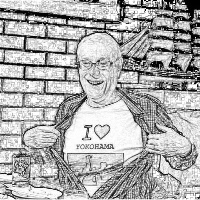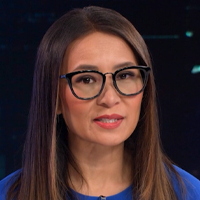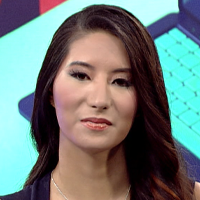International Public Notice: The Problem and the Pathway
By Anna Von Reitz
The problem is that "our" military isn't our military --- it has been bought and sold, and they have been working as low-paid mercenaries for the British Crown since the 1860's.
So, there are no gallant saviors. "Our" military has been paid by the British Crown Corporation, SERCO, which is its Paymaster. "Our" generals, diplomats, and even those serving "as" Presidents, have been knighted and received emoluments from the Queen of England, despite prohibitions against this in all three Federal Constitutions.
We have, unwittingly, been the Enforcers for the British Empire, which never gave up its colonialist urges -- simply changed names and jurisdictions.
Everything that you see going on around you, all this evil, including the loss of nearly a million American children per year, has been allowed by the U.S. Military. And they have profited from it. Greatly.
So please don't believe all the hype and don't promote it.
The U.S. Army has been in control since April of 1863 and we can prove it.
The Hague Conventions are derived from the Lieber Code, and we can prove it.
The dissolution of the League of Nations in favor of the United Nations was occasioned by Britain's need to change the jurisdiction of its venal colonialist operations, and we can prove it.
They changed the venue, but not the crimes.
Britain and its meddling is behind and the cause of all the constant uproar in the Middle East and we can prove it.
Instead of the land jurisdiction and actual countries being involved in the enslavement rackets, commodity rigging, and unjust enrichment personified by the British Raj in India, and now their "World Raj", corporations have been used as the instrumentalities of these Gross Offenders to accomplish the same ends and to perpetuate a form of Corporate Feudalism.
If anything, nameless Corporations that can easily be renamed and registered in various locations, and used for purposes of bankruptcy fraud, are less accountable than kings and queens.
Most recently, these brigands are offering to destroy various national monuments around the globe and blow up major dam facilities on several continents --- gestures to denigrate and change national identity on one hand, and calculated to cause mass death and chaos on the other.
These are deliberate, self-serving, cowardly proposals made by men who have so far lost their way, that they cannot conceive of a rational response to this situation, but only seek to avoid detection and reckoning for themselves.
The soldiers and managers of these corporations have been offered amnesty. If they don't take it, they are criminals. It's that simple. They are engaged in criminal activities and have been unknowingly, unofficially, unconscionably, engaged in criminal activities for many years.
We have not minced any words nor is there any lack of proof offered that: (1) they are operating in a foreign capacity and under the direction of foreign interests; (2) they have conspired against the Constitutions and evaded their obligations to the American People; (3) they have willfully implemented a self-interested process of latching onto American babies, copyrighting their Given Names, and registering them as foreign assets having foreign citizenship obligations; (4) they have misrepresented our government as being "missing" and "in interregnum" while keeping this secret from the American People; (5) they have substituted their own business organizations operating as "State of State" franchise corporations for our unincorporated American States of States (all known as Confederate States well-prior to the so-called Civil War); (6) they have illegally and immorally press-ganged and conscripted our young people and called it "the draft" for purposes of waging illegal Mercenary Conflicts throughout the world; (7) they have assumed outrageous powers and authorities for themselves under the guise of "Emergency Powers" never granted to them; (8) they have presented themselves as our caretakers and representatives under color of law and have acted as Executors de Son Tort with regard to our private and public property assets; (9) they have illegally and immorally occupied and asset-stripped our county under the pretense of a military occupation which is in fact an illegal mercenary occupation; (10) they have run their own privately-issued non-negotiable military scrip as a form of "legal tender" and monopolistically imposed this fraud upon the American People and run a whole gamut of commodity rigging, asset transfer, and title transfer fraud schemes and rackets based on this; (11) they have created and imposed an entire system of foreign "military districts" on this country and foreign "district courts" have been illegally and immorally introduced and operated in our States of the Union as King's Bench Courts; (12) these foreign courts coupled with the unconscionable unlawful conversion of American babies into British Crown assets (see Item 3 above) have been used to commit vast crimes of personage and illegal confiscation of property in this country and resulted in the denial of contractual guarantees and exemptions owed to the victims of these schemes; (13) they have become so corrupt in their administration and fiscal responsibilities that they have proposed to kill their erstwhile employers, the American People, who are also their Priority Creditors; (14) having evaluated their likely losses in a land war against the well-armed American Public, these cowards have instead unleashed an outlawed bioweapon to wipe out a large sector of our population --- and even profited themselves from this, by buying large quantities of their death-dealing product "for" us; (15) after decades of running a mutually beneficial double-dipping scheme in which Americans unknowingly paid for two entire "federal government" structures, one territorial and one municipal, together with two complete foreign court systems, and two sets of "state-of-state" franchises, the British Territorial U.S. Military Government is finally having to shove aside the Pope's Municipal Government minions and do some of the dirty work themselves; (16) they "lost" six trillion dollars-worth of Department of Defense money during the tenure of Donald Rumsfeld and have since "lost" another one trillion, three hundred billion dollars per year on a non-existent nuclear defense program; (17) their hand-picked and privately elected USA, Inc. "Presidents" and equally compromised British Territorial United States Congresses have failed to impose any fiscal restraint or accountability; (18) they have continued to run their own private corporation elections as if they were public elections so as to confuse and defraud the American People and lull them into the belief that these foreign commercial and municipal corporation "Presidents" are the long-lost American Presidents that we are owed; (19) they have, while acting under color of law and pretending to either be us or to represent us, exerted undue and unearned influence, have traded on our formerly good reputation and stolen identity, so as to recklessly access and spend our credit and illegally commit our resources to innumerable illegal and immoral commercial "wars" and incursions against other countries; (20) these criminal activities have been reported to all and any world authorities including the Central Banks which should have long ago shut down their access to our credit and asset accounts; (21) as a result of all the above, we must all -- and we do mean the entire world community -- deal with the fact that America is now and has long been in the grip of a criminal military conspiracy run as a mercenary force by the erstwhile "redefined" and "corporatized" British Colonialist Empire; (22) this secretively constructed "World Raj" has operated under color of law right under our noses and has claimed state immunities and protections owed to lawful governments that it has never been owed; (23) and now, we hear about a worldwide "military alliance" coming to save us, but it is apparent that a worldwide --- and criminal --- military alliance has been at the root of all this evil all along, so we do not advocate any undue trust or jubilation with regard to these offers of assistance for the national civilian governments and the living people of this planet, the seventeen still-illegally occupied countries of western Europe, the former Commonwealth, Japan, South Korea, Iraq, Libya, and diverse other countries that have come under the occupation and administrative control of the USA, Inc.
For anyone doubting that this is all true, please note their often repeated and passionate declarations about "their democracy" and threats to "democracy" etc., and realize that the government of this country has never been a democracy.
Please note that we have always had a republican form of government in the several States of the Union, not a democracy, and that once-upon-a-time, we also had a Federal Republic operating in international and global jurisdictions and doing business as "the States of America", which was the doing-business-as-name of our original 1781 Confederation of American States-of-States.
This American Federal Republic has been out of business since 1861.
Those responsible for this deplorable situation have recently offered to occupy our vacated Federal Republic and thereby redefine it as a British Territorial version of "a" Federal Republic under the control of the British Crown and King --- that is, pull another substitution fraud scheme and try to hoodwink everyone into thinking that their administration is the American Government without the nicety of consulting the American Government --- our States of the Union and our People.
We have objected to these misrepresentations and all other impersonations and misrepresentations that have been foisted off on us since the Buchanan Administration of the U.S. Government. This is nothing more or less than unlawful conversion and a national-level identity theft scheme carried out on a vast scale, and only made possible by the profound secrecy of the conspirators and the induced ignorance of our soldiery.
For those still cognizant enough to realize that it is their duty to protect our country and people "against all Enemies, both foreign and domestic" ---- with respect to military operations, the enemy is domestic to the U.S. and has been headquartered in the United States Territories and Possessions, most especially, in the British Commonwealth nation of Puerto Rico.
There can be no legal or lawful occupation of this country by the British Territorial U.S. Army, Inc. or any Successor thereof, nor any substitution of a British Territorial corporation dba "the American Government, Inc." for our unincorporated American Government or our unincorporated American Federal Republic.
These ruses must cease and those responsible for these lies must desist.
Realizing that our honorable men and women serving in the "American Armed Services" have been kept in the dark and that the vast majority of them have never been made aware of their own mercenary-for-hire status, we have offered them a general amnesty. They can come home at last and no longer be abused by these criminals.
In their endless search for unjust enrichment by any means, these same British-based organizations, their immediate predecessors and successors, have been directly and indirectly responsible for endless wars-for-profit, political intrigues, and pot-stirring of all kinds for the past 300 years beginning with Queen Anne, all aimed at creating a worldwide British-controlled and operated hegemony based on the impersonation and enslavement of otherwise free men and women and entire nations.
It is unknown precisely how their actions have been directed, aided, and abetted, or at times, ameliorated, by the Holy See; but it is clear that the British Monarch receives his crown(s) from the Pope and that all so-called Kings of England have acted as Overseers of the Church's Commonwealth lands in England since the early 1200s and have been co-conspirators in making illicit claims against the value of the souls of Roman Catholics and members of the Church of England since the reign of King Henry the Eighth.
A definite collusion between the Catholic Administration of the United States Municipal Government and the British Territorial "U.S." Government was formed in 1937 via the private "Declaration of Interdependence of the Governments in The United States", which created the redundant "double" Federal Government in this country referenced above.
These are the acts of self-interested commercial criminals hiding under the skirts of lawful governments and institutions, creating and then bilking public trusts and cashiering both public and private assets that never belonged to them, for their own unjust enrichment.
Throughout the discussions leading to this day, a process of more than twenty years duration, the Perpetrators of these crimes have evinced a willingness to share the spoils --- about 10% --- to their victims, but never agreed to do their actual jobs and honor their contractual obligations set forth in all three Federal Constitutions.
They have instead desired to retain and double-down on their coercive control of the living people in the countries affected by their hegemony, and have set up another monopolistic banking scheme that they misrepresent as the "Quantum Financial System" aka, "QFS". This is in fact a cobbled together system compiled by the CIA at Wright-Patterson AFB under the code name "Crimson Gate" and it is as "Quantum" as the Federal Reserve System was "Federal".
We are extremely tired of these sophomoric excuses and evasions and improper "offers" to provide us with such "services" as killing a third of our population with injections of crap to avoid paying them back even ten cents on a dollar, leaving our southern border open to unlimited illegal immigration, lying about everything possible, and continuing to press their ridiculous political party elections of private corporation "Presidents" as if these were the public elections and public offices that Americans are owed.
We are not deceived and we are not amused. We are witnessing the spectacle of grown people in responsible positions, engaging in theater and talking about "shows" --- how they are going to hoodwink the American Public again, demonize their enemies and create enemies that don't exist, all to make themselves out to be grand heroes --- instead of humbly owning their actual status as (largely unknowing) cheap paid mercenaries of the British Conspirators that have been at the bottom of every dogpile in the past 300 years.
In our estimation, these people are afraid. They are afraid of the consequences of their actions, whether they actually knew what they were doing, or not. They are afraid of the rage of the people that their actions have betrayed. They are afraid of letting go of the power that they usurped from the public. They are suspicious of everyone, including each other. And they don't know what to do.
The simple acceptance of amnesty, the honorable return of purloined assets, and lawful conversion of their corporations back to the land jurisdiction of their respective countries, seems to be overwhelming their brain stems, but giving up the lies, excuses, and coercive control seems to be the hardest pill to swallow.
They still want to be in control despite their deplorable performance, their breaches of trust, and their violations of their contracts --- the respective Constitutions and accommodations which allowed them to be here with the rest of us.
They struggle over the concept that it's both illegal and unlawful for them to be occupying our country or any of the other affected countries.
They are stymied to learn that The Law of War does not apply to Mercenary Conflicts and no amount of rules and codes and orders will paper over the criminal nature of what they have been involved in as "soldiers for hire" working at the behest of foreign governments.
They cling to the idea that they have "Emergency Powers" when no such "powers" were ever granted to them in any contract or treaty anywhere in existence; they continue to try to rule by "Executive Order" when there is no authority for that, either.
We understand that they have been operating illegally and unlawfully for over a hundred years and don't know any better, but once it has been discovered and exposed and everyone involved has been provided Notice and Due Process, it's time to wake up and take the simplest, clearest, most peaceable way out of it that is possible.
Amnesty. Return of purloined assets to the control of the actual owners. Resettlement on the land and acceptance of land law. Lawful conversion of corporate assets. And everyone worldwide gets their stuff back and gets to share the unjust enrichment generated by all this criminal activity.
This is the path forward which we have placed before the Perpetrators and the Public worldwide. We have been compassionate in our search for justice, circumspect in our consideration, and patient in the face of continuing nonsense.
Issued by:
Anna Maria Riezinger, Fiduciary
The United States of America
In care of: Box 520994
Big Lake, Alaska 99652
July 24th 2024
----------------------------
See this article and over 4900 others on Anna's website here: www.annavonreitz.com
Circles
Posts
The verdict is in: COVID jabs KILL
https://newstarget.com/2024-07-23-biopsy-specialists-japan-covid-vaccines-heart-failure.html

A team of Japanese researchers successfully employed a specialized biopsy technique to prove that Wuhan coronavirus (COVID-19) “vaccines” destroy the human heart. Dr. Hiroyuki Yamamoto from the Department of Cardiovascular Medicine at Narita-Tomisato Tokushukai Hospital in Chiba, Japan, led the following team of people in determining the cause behind the global spike in cardiac deaths […]
www.newstarget.com
Visit the KLM Airlines Tokyo Office for all your travel requirements. Our hard-working staff arranges flights offers excellent customer service and gives thorough travel guidance. With our handy Tokyo location we guarantee a seamless and effective travel experience for every passenger. You can rely on KLM to provide you with dependable personable and professional service whether you need help with reservations baggage questions or trip updates. Make your trip with KLM unforgettable by receiving the best possible customer service.
visit us : https://airlinesofficeinfo.com/offices/klm-airlines-tokyo-office-in-japan/
Videos
In this episode of Direct Impact with Rick Sanchez, Rick criticizes a staged NBC interview with President Joe Biden, suggesting it’s a diversion from his recent gaffes and implying internal Democratic Party turmoil as Nancy Pelosi reportedly seeks Biden’s removal. The episode also explores geopolitical shifts, noting China and Russia’s joint military exercises amid a new defense pact between the Philippines and Japan. Finally, Florida delegate Angie Wong joins the show to discuss the Republican mood heading into the 2024 election.
On this episode of Direct Impact, Rick Sanchez discusses recent comments by US President Joe Biden that India, Japan, and other nations are quote “xenophobic.” Correspondent Manila Chan joins Rick to discuss what geopolitical and economic repercussions could result from the president’s most recent comments. Rick and Manila also discuss US senators threatening the International Criminal Court if any nation attempts to prosecute Israeli Prime Minister Benjamin Netanyahu for war crimes. The two also discuss Russia’s upcoming Victory Day Parade and strange reactions in Germany, Christian persecution in Gaza, and the odd return of a former US Congressman. Then Rick is joined by Asia-Pacific expert Sourabh Gupta to discuss US-India relations.
On this episode of The M.O., host Manila Chan discusses the growing turmoil in the Pacific, including the de facto Cold War taking place in the South China Sea. Manila speaks to Dr. Ken Hammond about the prospect of a conflict between the U.S. and China in the Pacific and what can be done to simmer tensions.
Circles
Videos
In this episode of Direct Impact with Rick Sanchez, Rick criticizes a staged NBC interview with President Joe Biden, suggesting it’s a diversion from his recent gaffes and implying internal Democratic Party turmoil as Nancy Pelosi reportedly seeks Biden’s removal. The episode also explores geopolitical shifts, noting China and Russia’s joint military exercises amid a new defense pact between the Philippines and Japan. Finally, Florida delegate Angie Wong joins the show to discuss the Republican mood heading into the 2024 election.
On this episode of Direct Impact, Rick Sanchez discusses recent comments by US President Joe Biden that India, Japan, and other nations are quote “xenophobic.” Correspondent Manila Chan joins Rick to discuss what geopolitical and economic repercussions could result from the president’s most recent comments. Rick and Manila also discuss US senators threatening the International Criminal Court if any nation attempts to prosecute Israeli Prime Minister Benjamin Netanyahu for war crimes. The two also discuss Russia’s upcoming Victory Day Parade and strange reactions in Germany, Christian persecution in Gaza, and the odd return of a former US Congressman. Then Rick is joined by Asia-Pacific expert Sourabh Gupta to discuss US-India relations.
On this episode of The M.O., host Manila Chan discusses the growing turmoil in the Pacific, including the de facto Cold War taking place in the South China Sea. Manila speaks to Dr. Ken Hammond about the prospect of a conflict between the U.S. and China in the Pacific and what can be done to simmer tensions.
On this episode of The M.O., host Manila Chan dives into the hot topic of the re-militarization of Japan. Manila sits down with author James Bradley to discuss Japanese history after World War II and the subsequent move by Tokyo to boost their military budget in the face of a perceived Chinese and North Korean threat.
On this episode of the Cost of Everything we take a closer look at trains and what it costs to run efficient public transportation. Is there a reason high-speed rail seems to be spreading everywhere except the United States? And which countries rely on trains the most for cargo transportation? Host Christy Ai compares how the train infrastructure differs in the West and the East with award winning author Christian Wolmar.
Posts
International Public Notice: The Problem and the Pathway
By Anna Von Reitz
The problem is that "our" military isn't our military --- it has been bought and sold, and they have been working as low-paid mercenaries for the British Crown since the 1860's.
So, there are no gallant saviors. "Our" military has been paid by the British Crown Corporation, SERCO, which is its Paymaster. "Our" generals, diplomats, and even those serving "as" Presidents, have been knighted and received emoluments from the Queen of England, despite prohibitions against this in all three Federal Constitutions.
We have, unwittingly, been the Enforcers for the British Empire, which never gave up its colonialist urges -- simply changed names and jurisdictions.
Everything that you see going on around you, all this evil, including the loss of nearly a million American children per year, has been allowed by the U.S. Military. And they have profited from it. Greatly.
So please don't believe all the hype and don't promote it.
The U.S. Army has been in control since April of 1863 and we can prove it.
The Hague Conventions are derived from the Lieber Code, and we can prove it.
The dissolution of the League of Nations in favor of the United Nations was occasioned by Britain's need to change the jurisdiction of its venal colonialist operations, and we can prove it.
They changed the venue, but not the crimes.
Britain and its meddling is behind and the cause of all the constant uproar in the Middle East and we can prove it.
Instead of the land jurisdiction and actual countries being involved in the enslavement rackets, commodity rigging, and unjust enrichment personified by the British Raj in India, and now their "World Raj", corporations have been used as the instrumentalities of these Gross Offenders to accomplish the same ends and to perpetuate a form of Corporate Feudalism.
If anything, nameless Corporations that can easily be renamed and registered in various locations, and used for purposes of bankruptcy fraud, are less accountable than kings and queens.
Most recently, these brigands are offering to destroy various national monuments around the globe and blow up major dam facilities on several continents --- gestures to denigrate and change national identity on one hand, and calculated to cause mass death and chaos on the other.
These are deliberate, self-serving, cowardly proposals made by men who have so far lost their way, that they cannot conceive of a rational response to this situation, but only seek to avoid detection and reckoning for themselves.
The soldiers and managers of these corporations have been offered amnesty. If they don't take it, they are criminals. It's that simple. They are engaged in criminal activities and have been unknowingly, unofficially, unconscionably, engaged in criminal activities for many years.
We have not minced any words nor is there any lack of proof offered that: (1) they are operating in a foreign capacity and under the direction of foreign interests; (2) they have conspired against the Constitutions and evaded their obligations to the American People; (3) they have willfully implemented a self-interested process of latching onto American babies, copyrighting their Given Names, and registering them as foreign assets having foreign citizenship obligations; (4) they have misrepresented our government as being "missing" and "in interregnum" while keeping this secret from the American People; (5) they have substituted their own business organizations operating as "State of State" franchise corporations for our unincorporated American States of States (all known as Confederate States well-prior to the so-called Civil War); (6) they have illegally and immorally press-ganged and conscripted our young people and called it "the draft" for purposes of waging illegal Mercenary Conflicts throughout the world; (7) they have assumed outrageous powers and authorities for themselves under the guise of "Emergency Powers" never granted to them; (8) they have presented themselves as our caretakers and representatives under color of law and have acted as Executors de Son Tort with regard to our private and public property assets; (9) they have illegally and immorally occupied and asset-stripped our county under the pretense of a military occupation which is in fact an illegal mercenary occupation; (10) they have run their own privately-issued non-negotiable military scrip as a form of "legal tender" and monopolistically imposed this fraud upon the American People and run a whole gamut of commodity rigging, asset transfer, and title transfer fraud schemes and rackets based on this; (11) they have created and imposed an entire system of foreign "military districts" on this country and foreign "district courts" have been illegally and immorally introduced and operated in our States of the Union as King's Bench Courts; (12) these foreign courts coupled with the unconscionable unlawful conversion of American babies into British Crown assets (see Item 3 above) have been used to commit vast crimes of personage and illegal confiscation of property in this country and resulted in the denial of contractual guarantees and exemptions owed to the victims of these schemes; (13) they have become so corrupt in their administration and fiscal responsibilities that they have proposed to kill their erstwhile employers, the American People, who are also their Priority Creditors; (14) having evaluated their likely losses in a land war against the well-armed American Public, these cowards have instead unleashed an outlawed bioweapon to wipe out a large sector of our population --- and even profited themselves from this, by buying large quantities of their death-dealing product "for" us; (15) after decades of running a mutually beneficial double-dipping scheme in which Americans unknowingly paid for two entire "federal government" structures, one territorial and one municipal, together with two complete foreign court systems, and two sets of "state-of-state" franchises, the British Territorial U.S. Military Government is finally having to shove aside the Pope's Municipal Government minions and do some of the dirty work themselves; (16) they "lost" six trillion dollars-worth of Department of Defense money during the tenure of Donald Rumsfeld and have since "lost" another one trillion, three hundred billion dollars per year on a non-existent nuclear defense program; (17) their hand-picked and privately elected USA, Inc. "Presidents" and equally compromised British Territorial United States Congresses have failed to impose any fiscal restraint or accountability; (18) they have continued to run their own private corporation elections as if they were public elections so as to confuse and defraud the American People and lull them into the belief that these foreign commercial and municipal corporation "Presidents" are the long-lost American Presidents that we are owed; (19) they have, while acting under color of law and pretending to either be us or to represent us, exerted undue and unearned influence, have traded on our formerly good reputation and stolen identity, so as to recklessly access and spend our credit and illegally commit our resources to innumerable illegal and immoral commercial "wars" and incursions against other countries; (20) these criminal activities have been reported to all and any world authorities including the Central Banks which should have long ago shut down their access to our credit and asset accounts; (21) as a result of all the above, we must all -- and we do mean the entire world community -- deal with the fact that America is now and has long been in the grip of a criminal military conspiracy run as a mercenary force by the erstwhile "redefined" and "corporatized" British Colonialist Empire; (22) this secretively constructed "World Raj" has operated under color of law right under our noses and has claimed state immunities and protections owed to lawful governments that it has never been owed; (23) and now, we hear about a worldwide "military alliance" coming to save us, but it is apparent that a worldwide --- and criminal --- military alliance has been at the root of all this evil all along, so we do not advocate any undue trust or jubilation with regard to these offers of assistance for the national civilian governments and the living people of this planet, the seventeen still-illegally occupied countries of western Europe, the former Commonwealth, Japan, South Korea, Iraq, Libya, and diverse other countries that have come under the occupation and administrative control of the USA, Inc.
For anyone doubting that this is all true, please note their often repeated and passionate declarations about "their democracy" and threats to "democracy" etc., and realize that the government of this country has never been a democracy.
Please note that we have always had a republican form of government in the several States of the Union, not a democracy, and that once-upon-a-time, we also had a Federal Republic operating in international and global jurisdictions and doing business as "the States of America", which was the doing-business-as-name of our original 1781 Confederation of American States-of-States.
This American Federal Republic has been out of business since 1861.
Those responsible for this deplorable situation have recently offered to occupy our vacated Federal Republic and thereby redefine it as a British Territorial version of "a" Federal Republic under the control of the British Crown and King --- that is, pull another substitution fraud scheme and try to hoodwink everyone into thinking that their administration is the American Government without the nicety of consulting the American Government --- our States of the Union and our People.
We have objected to these misrepresentations and all other impersonations and misrepresentations that have been foisted off on us since the Buchanan Administration of the U.S. Government. This is nothing more or less than unlawful conversion and a national-level identity theft scheme carried out on a vast scale, and only made possible by the profound secrecy of the conspirators and the induced ignorance of our soldiery.
For those still cognizant enough to realize that it is their duty to protect our country and people "against all Enemies, both foreign and domestic" ---- with respect to military operations, the enemy is domestic to the U.S. and has been headquartered in the United States Territories and Possessions, most especially, in the British Commonwealth nation of Puerto Rico.
There can be no legal or lawful occupation of this country by the British Territorial U.S. Army, Inc. or any Successor thereof, nor any substitution of a British Territorial corporation dba "the American Government, Inc." for our unincorporated American Government or our unincorporated American Federal Republic.
These ruses must cease and those responsible for these lies must desist.
Realizing that our honorable men and women serving in the "American Armed Services" have been kept in the dark and that the vast majority of them have never been made aware of their own mercenary-for-hire status, we have offered them a general amnesty. They can come home at last and no longer be abused by these criminals.
In their endless search for unjust enrichment by any means, these same British-based organizations, their immediate predecessors and successors, have been directly and indirectly responsible for endless wars-for-profit, political intrigues, and pot-stirring of all kinds for the past 300 years beginning with Queen Anne, all aimed at creating a worldwide British-controlled and operated hegemony based on the impersonation and enslavement of otherwise free men and women and entire nations.
It is unknown precisely how their actions have been directed, aided, and abetted, or at times, ameliorated, by the Holy See; but it is clear that the British Monarch receives his crown(s) from the Pope and that all so-called Kings of England have acted as Overseers of the Church's Commonwealth lands in England since the early 1200s and have been co-conspirators in making illicit claims against the value of the souls of Roman Catholics and members of the Church of England since the reign of King Henry the Eighth.
A definite collusion between the Catholic Administration of the United States Municipal Government and the British Territorial "U.S." Government was formed in 1937 via the private "Declaration of Interdependence of the Governments in The United States", which created the redundant "double" Federal Government in this country referenced above.
These are the acts of self-interested commercial criminals hiding under the skirts of lawful governments and institutions, creating and then bilking public trusts and cashiering both public and private assets that never belonged to them, for their own unjust enrichment.
Throughout the discussions leading to this day, a process of more than twenty years duration, the Perpetrators of these crimes have evinced a willingness to share the spoils --- about 10% --- to their victims, but never agreed to do their actual jobs and honor their contractual obligations set forth in all three Federal Constitutions.
They have instead desired to retain and double-down on their coercive control of the living people in the countries affected by their hegemony, and have set up another monopolistic banking scheme that they misrepresent as the "Quantum Financial System" aka, "QFS". This is in fact a cobbled together system compiled by the CIA at Wright-Patterson AFB under the code name "Crimson Gate" and it is as "Quantum" as the Federal Reserve System was "Federal".
We are extremely tired of these sophomoric excuses and evasions and improper "offers" to provide us with such "services" as killing a third of our population with injections of crap to avoid paying them back even ten cents on a dollar, leaving our southern border open to unlimited illegal immigration, lying about everything possible, and continuing to press their ridiculous political party elections of private corporation "Presidents" as if these were the public elections and public offices that Americans are owed.
We are not deceived and we are not amused. We are witnessing the spectacle of grown people in responsible positions, engaging in theater and talking about "shows" --- how they are going to hoodwink the American Public again, demonize their enemies and create enemies that don't exist, all to make themselves out to be grand heroes --- instead of humbly owning their actual status as (largely unknowing) cheap paid mercenaries of the British Conspirators that have been at the bottom of every dogpile in the past 300 years.
In our estimation, these people are afraid. They are afraid of the consequences of their actions, whether they actually knew what they were doing, or not. They are afraid of the rage of the people that their actions have betrayed. They are afraid of letting go of the power that they usurped from the public. They are suspicious of everyone, including each other. And they don't know what to do.
The simple acceptance of amnesty, the honorable return of purloined assets, and lawful conversion of their corporations back to the land jurisdiction of their respective countries, seems to be overwhelming their brain stems, but giving up the lies, excuses, and coercive control seems to be the hardest pill to swallow.
They still want to be in control despite their deplorable performance, their breaches of trust, and their violations of their contracts --- the respective Constitutions and accommodations which allowed them to be here with the rest of us.
They struggle over the concept that it's both illegal and unlawful for them to be occupying our country or any of the other affected countries.
They are stymied to learn that The Law of War does not apply to Mercenary Conflicts and no amount of rules and codes and orders will paper over the criminal nature of what they have been involved in as "soldiers for hire" working at the behest of foreign governments.
They cling to the idea that they have "Emergency Powers" when no such "powers" were ever granted to them in any contract or treaty anywhere in existence; they continue to try to rule by "Executive Order" when there is no authority for that, either.
We understand that they have been operating illegally and unlawfully for over a hundred years and don't know any better, but once it has been discovered and exposed and everyone involved has been provided Notice and Due Process, it's time to wake up and take the simplest, clearest, most peaceable way out of it that is possible.
Amnesty. Return of purloined assets to the control of the actual owners. Resettlement on the land and acceptance of land law. Lawful conversion of corporate assets. And everyone worldwide gets their stuff back and gets to share the unjust enrichment generated by all this criminal activity.
This is the path forward which we have placed before the Perpetrators and the Public worldwide. We have been compassionate in our search for justice, circumspect in our consideration, and patient in the face of continuing nonsense.
Issued by:
Anna Maria Riezinger, Fiduciary
The United States of America
In care of: Box 520994
Big Lake, Alaska 99652
July 24th 2024
----------------------------
See this article and over 4900 others on Anna's website here: www.annavonreitz.com
The verdict is in: COVID jabs KILL
https://newstarget.com/2024-07-23-biopsy-specialists-japan-covid-vaccines-heart-failure.html

A team of Japanese researchers successfully employed a specialized biopsy technique to prove that Wuhan coronavirus (COVID-19) “vaccines” destroy the human heart. Dr. Hiroyuki Yamamoto from the Department of Cardiovascular Medicine at Narita-Tomisato Tokushukai Hospital in Chiba, Japan, led the following team of people in determining the cause behind the global spike in cardiac deaths […]
www.newstarget.com
Visit the KLM Airlines Tokyo Office for all your travel requirements. Our hard-working staff arranges flights offers excellent customer service and gives thorough travel guidance. With our handy Tokyo location we guarantee a seamless and effective travel experience for every passenger. You can rely on KLM to provide you with dependable personable and professional service whether you need help with reservations baggage questions or trip updates. Make your trip with KLM unforgettable by receiving the best possible customer service.
visit us : https://airlinesofficeinfo.com/offices/klm-airlines-tokyo-office-in-japan/
The verdict is in: COVID jabs KILL
https://www.naturalnews.com/2024-07-23-biopsy-specialists-japan-covid-vaccines-heart-failure.html

A team of Japanese researchers successfully employed a specialized biopsy technique to prove that Wuhan coronavirus (COVID-19) “vaccines” destroy the human heart. Dr. Hiroyuki Yamamoto from the Department of Cardiovascular Medicine at Narita-Tomisato Tokushukai Hospital in Chiba, Japan, led the following team of people in determining the cause behind the global spike in cardiac deaths […]
www.naturalnews.com
🚨 Japanese Doctors Confirm Rare Heart Condition After COVID Shot
A case study from Japan has documented the first known biopsy-proven instance of inflammatory dilated cardiomyopathy (iDCM) — a condition where the heart becomes enlarged and weakened due to inflammation — following COVID-19 vaccination.
⬇️
https://childrenshealthdefense.org/defender/cardiomyopathy-covid-vaccines-japan-study/?utm_source=sovren&utm_medium=social&utm_campaign=defender&utm_id=20240723

Doctors in Japan who documented the first known biopsy-proven instance of inflammatory dilated cardiomyopathy — a condition where the heart becomes enlarged and weakened due to inflammation — following COVID-19 vaccination said their case study demonstrates the value of advanced diagnostic techniques in identifying and understanding vaccine-related side effects.
childrenshealthdefense.org


















